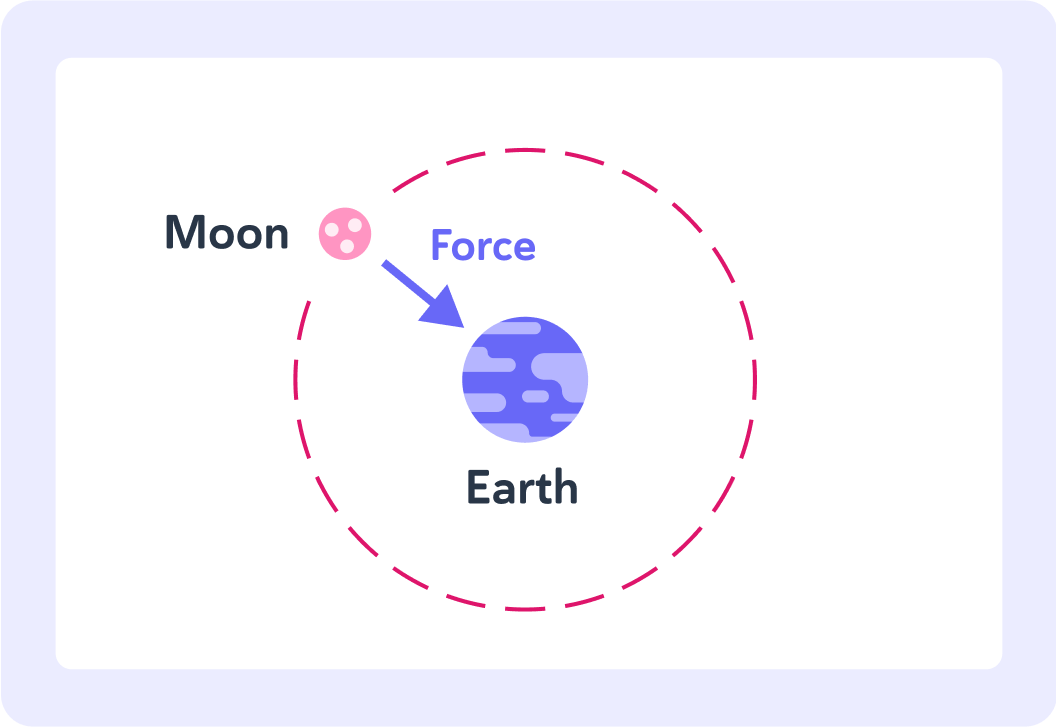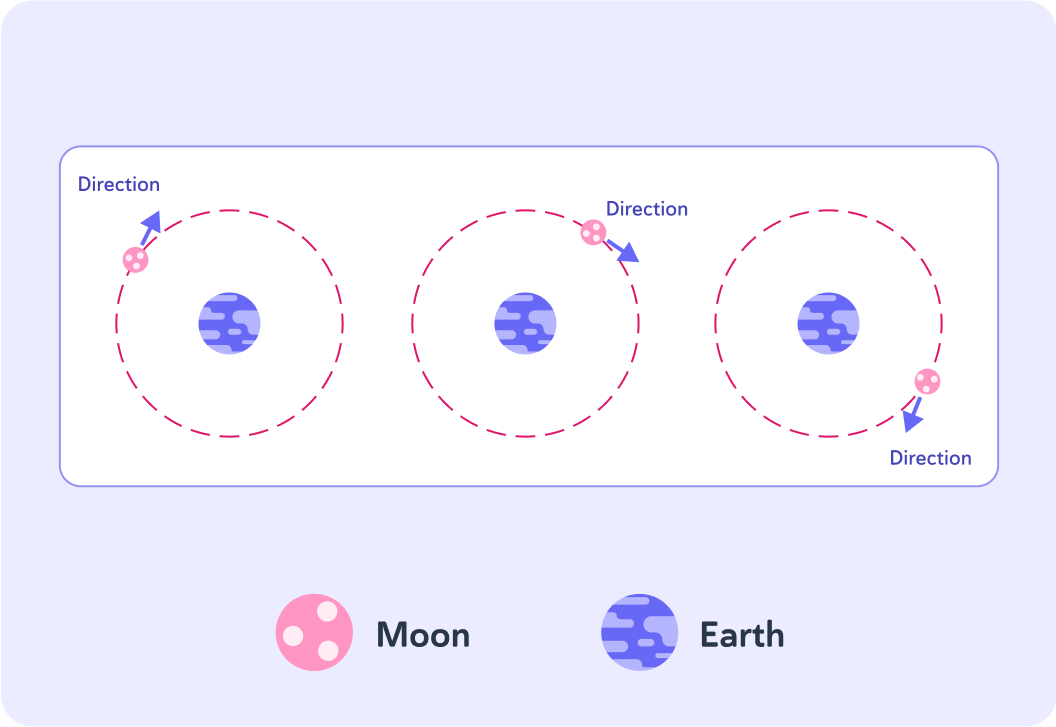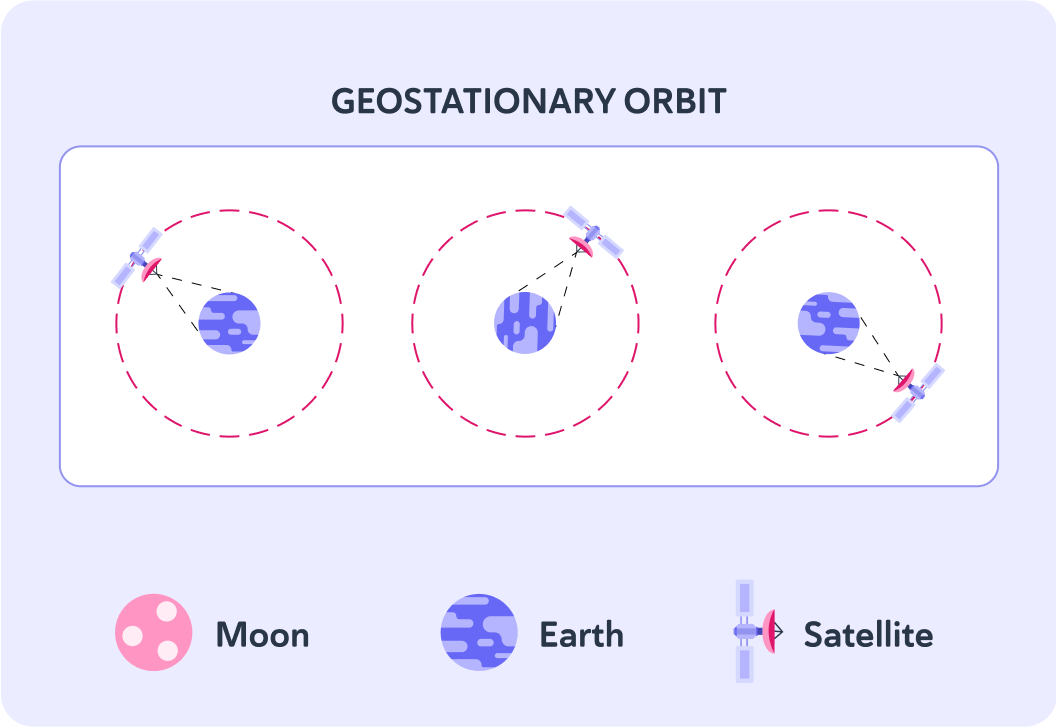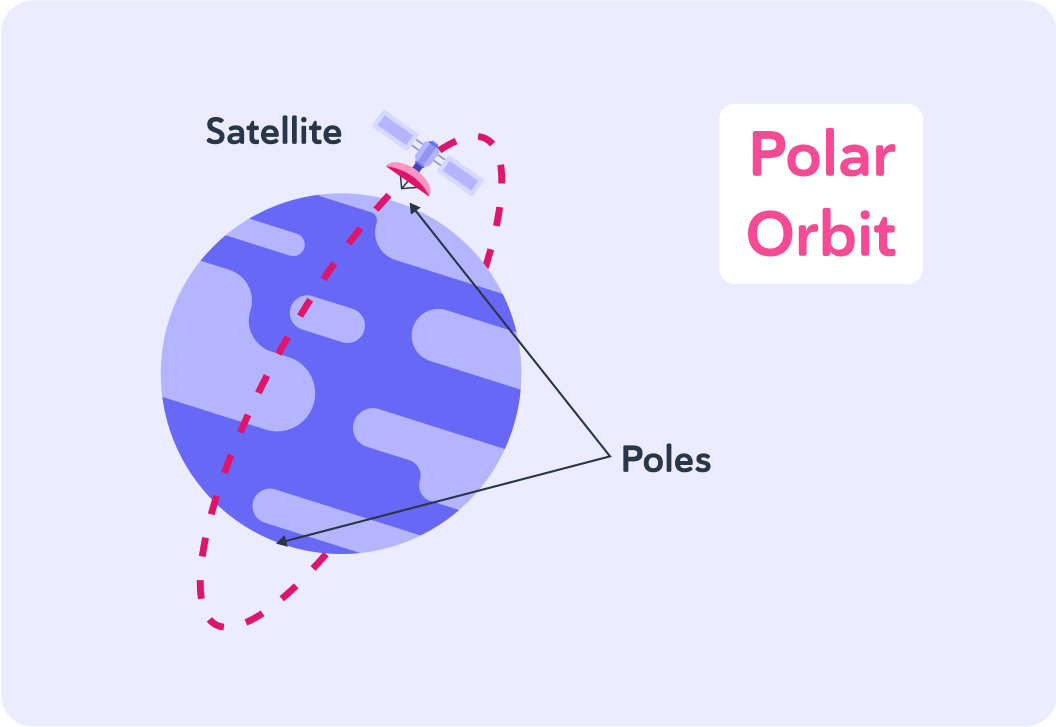YOU ARE LEARNING:
Circular Orbits

Circular Orbits
Gravity keeps planets and satellites in orbital motion, travelling at constant speed but changing velocity.
The Moon's path around the Earth is the shape of a circle, so it is a __________ orbit.


The Moon is kept in this circular orbit around the Earth because of the force of ___________.


It is the force of gravity, acting between the Moon and the Earth, that holds the Moon in its stable orbit around the Earth
Likewise, all the planets that orbit the Sun are held in their orbits by the force of gravity between the Sun and the planets.

Now, do you think the Moon travels at constant speed around the Earth or does it change its speed?
A) Constant speed B) Changes speed


So the Moon travels at constant speed around the Earth. Does the Moon's direction change? Answer yes or no.


As the Moon orbits the Earth, it travels at a constant speed, but its direction is constantly changing. What can we say about its velocity?
A) It's constant. B) It's constantly changing.


Velocity is a vector quantity
So an object that is moving in a circular orbit will be constantly changing its velocity, even if its speed is constant. This is because it will have to constantly change its direction. Otherwise it wouldn't be a circular orbit.

The Moon is a kind of satellite. What kind?

Artificial satellites are man-made satellites.
Pick all the options that are examples artificial satellites.

You can select multiple answers
We send artificial satellites into orbits around the Earth for different reasons
It could be to monitor the weather, to provide satellite TV, or to make observations of space.
Artificial satellites travel in one of two different orbits
Geostationary orbits or polar orbits.

Geostationary satellites complete an orbit around Earth in the same time as the takes Earth to rotate once. How many hours is that?


Geostationary satellites orbit around the Earth at the same speed that Earth rotates
This means that they stay above the same point on Earth even when Earth rotates. From the ground, it looks as if the satellite remains in the same part of the sky.

Examples of geostationary satellites are...
TV broadcast satellites and weather satellites.

Geostationary orbits are quite high above the ground
Typically around 36,000 km up!

Satellites in polar orbits go over the Earth’s poles
They are used for observing and mapping the Earth.

Polar orbits can travel as low as 200 km above sea level. So in what kind of orbit do satellites travel higher up?
A) Polar orbits B) Geostationary orbits


Summary
Planets, moons and satellites are all held in orbits...
due to the force of gravity.
Orbiting objects travel at a constant speed...
but their velocity is constantly changing, because their direction is constantly changing. Otherwise they wouldn't be moving in a circle.
Artificial satellites can travel in either...
geostationary orbits or polar orbits.
Geostationary satellites...
orbit the Earth every 24 hours so from the ground it looks like they stay in the same point in the sky.
They are about 36,000 km up!
Polar orbits...
travel more frequently around the Earth, and pass over each of the Earth's poles.
They can go as low as 200 km above sea level.
